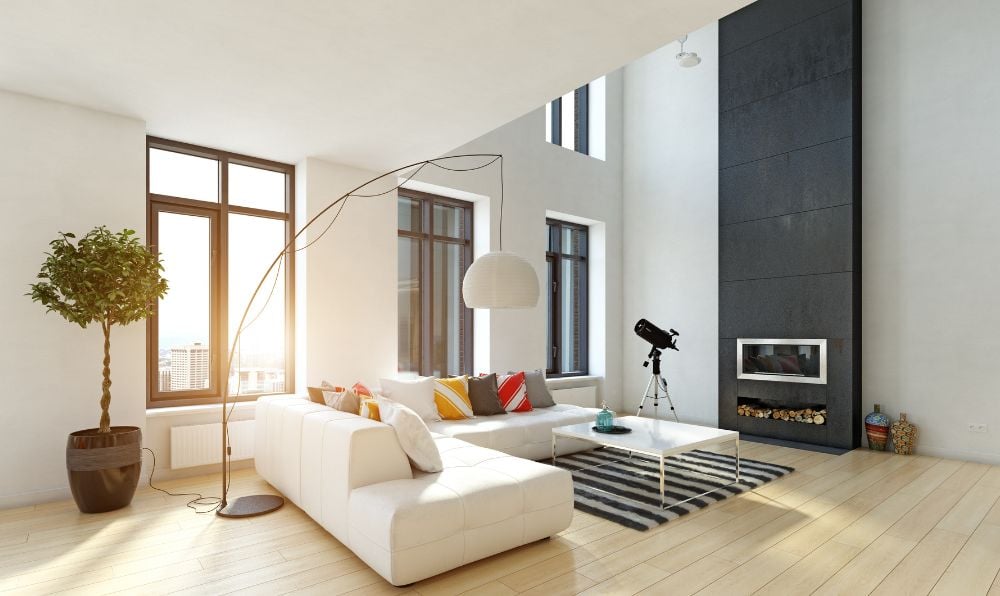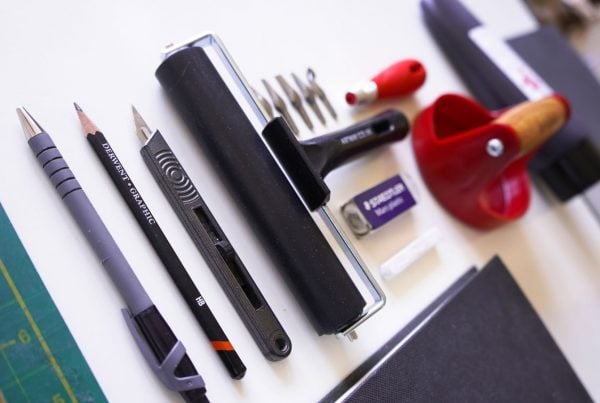Disclosure Sponsored Links: This post contains a paid-for sponsored link, meaning we have received compensation in exchange for including it. Sponsorship does not influence our content, but we believe in transparency regarding paid placements.
With the current cost of living crisis, the high cost of buying property and rising rental prices becoming the norm, it’s not an easy time to be a property owner or a rental tenant in the current climate.
Nevertheless, property owners and tenants seek ways to maximise their living spaces while having personal expression and comfort. For example, Norwich, known for its thriving arts, music and cultural scene, allows property owners and tenants to make their living spaces with personal expression and comfort. Some tenants may lean towards fully furnished properties, like those you’ll find listed on this page, with various types of accommodation available. In contrast, others may prefer to start with a clean canvas and add their unique touch. It entirely depends on what the specific client wants.
However, regardless of whether furnished or unfurnished, finding the right balance between aesthetics and practicality is often challenging in rental properties.
In this article, we will explore how aesthetics and practicality are balanced in rental spaces. Whether you’re the owner of a rental property seeking to attract and retain tenants or a renter seeking to personalise your ‘temporary’ home, we will provide insights, tips, and creative strategies.
Table of Contents
1. Choosing the Right Rental Property Design Can Be Challenging
There are unique challenges involved in designing any rental space, as those who rent will be more than aware of.
In contrast to homeowners, tenants are usually confined by landlord-imposed restrictions that are often outlined in the rental contract. These restrictions can include structural changes, painting, or major renovations.
The following are some of the challenges that property owners and renters may face when designing the living space of a property:
- Budget Limitations: For property owners, it’s recommended to choose a design for the property that will attract tenants and provide them with a comfortable home but also allows for making upgrades that maximise property value.
- Durability and Maintenance: Whether you’re the property owner or renting, it’s advisable to ensure that your rental space is easy to maintain. Therefore, keep in mind that the materials and furnishings within the property can withstand wear and tear.
- Turnover of Tenants: In the UK, tenants stay, on average, in a property for just over four years. So, it is important for property owners to keep in mind that different tastes and preferences can make it difficult for a design to remain cohesive and stylish as tenants come and go.
2. Effective Designing Any Rental Space With These Tips
Decoration and Colour
One of the easiest ways to transform any rental space is to pick up a paintbrush and add some colour. It’s possible to create a significant impact by strategically using colour effectively by carefully selecting the colour scheme for each room. In addition, choosing the correct colour scheme can positively influence mood and make a room appear more spacious.
Consider choosing neutral or light colours when it comes to walls and large furniture. Moreover, choose colourful accessories like throw pillows, rugs, and artwork to add personality to your home.
Picking the Right Furniture
Selecting the correct furniture for a rental space can significantly influence its aesthetics and functionality. One tip is to look for furniture that services multiple purposes. These may include a functional coffee table with drawers or a stylish ottoman that doubles as storage space.
It’s important that property owners invest in high-quality yet cost-effective and durable yet stylish furniture to make the property appealing to potential renters. The key here is to select furniture that complements the space and, importantly, is easy to move.
Add a Personal Touch
Although tenants may be restricted from making widescale design changes, the living space can still be personalised. There are many ways to do this, including using removable wallpaper or temporary adhesive hooks for hanging up pictures or rental art.
Another way to add a personal touch is to think about lifestyle. Those who love reading may focus on personalising their space with adjustable lighting and a bookshelf or bookcase.
In addition, landlords can also be more flexible and allow tenants to express their personality in a rental agreement. Providing tenants with the option of painting one accent wall or selecting approved colours can make the home feel warm, cosy and inviting.
The Importance of Lighting
With the right lighting within a room, you can create and influence mood, enhance ambience and improve workspaces. Simply adding a floor lamp, table lamp, or a wall sconce can make all the difference.
Equally, It’s advisable that property owners invest in stylish light fixtures that are both visually appealing and, importantly, functional. For example, a colourful desk lamp on a solid oak computer desk. By replacing outdated or generic fixtures with more modern styles, a space can be updated without undergoing costly renovations.
3. Striking the Right Balance Between Aesthetics and Practicality
Finding the right balance between aesthetics and practicality is extremely important when creating a living space for yourself or a tenant. The following tips can help you achieve that balance.
Make Versatility a Priority
Property owners and tenants should both place a high priority on versatility. When designing the rental space, it’s worth remembering that the design elements should be adaptable so that tenants can adapt and personalise their living space as they see fit. In addition, this also means that furniture should be easy to rearrange and room layouts be adaptable.
It’s also worth keeping the rental spaces balanced when accommodating young professionals, as often the preference is modern and sleek, whereas families may prefer a more functional, family-friendly setup.
Make Smart Investments
One thing to note for property owners is to make smart design investments. Investing in high-impact and low-maintenance upgrades is the way to go, as not only will this attract potential tenants, but it will also benefit the property in the long run. For example, simply adding a colourful splashback to the kitchen or adding a shower storage rack.
Renters should focus on affordable decor choices they can easily transfer to their next rental property.
Treat the Space With Respect
Both landlords and tenants should respect the property. Property owners can create a canvas for their tenants while tenants can enhance the property to meet their preferences. By having respect for the property, both can work together to create a luxury living space.
Student Rental Accommodation in Norwich, UK
When it comes to student accommodation in Norwich, both the University of East Anglia (UEA) and the Norwich University of the Arts (NUA) have various options that cater to a broad spectrum of needs and preferences, ensuring that every student finds a suitable place to call home during their studies.
University of East Anglia (UEA)
Situated to the southwest of the city centre, the University of East Anglia’s campus is an amalgam of award-winning architecture and green spaces. The UEA offers an array of on-campus accommodation that ranges from en-suite rooms to shared apartments, ensuring a variety of choices for students. These residences are particularly beneficial for first-year students or international students who seek the convenience of proximity to university facilities and a community atmosphere that aids in settling into university life.
The UEA accommodation office also provides assistance to students looking for off-campus housing. The areas of West Earlham, Eaton, and Bowthorpe are popular among students for private rentals due to their close vicinity to the campus. Students can find shared houses, apartments, and sometimes studio flats, which offer a more independent lifestyle. These areas are typically well-connected to the campus by public transport, and rental prices can be more budget-friendly compared to living in the city centre.
Norwich University of the Arts (NUA)
Located in the heart of Norwich’s city centre, NUA is perfectly positioned for students to immerse themselves in the vibrant cultural scene. The university itself does not own any halls of residence, but it works closely with private providers to ensure students have access to high-quality housing options. Accommodation affiliated with NUA often includes modern apartments and studios designed with the creative student in mind, fostering an environment that is conducive to both study and the social aspects of student life.
Students at NUA also opt for private rentals in the city’s various historical and picturesque locations, such as the Lanes and the Cathedral Quarter. The charm of these areas, combined with their cultural significance, makes them highly sought after. While the rent here may carry a premium, the proximity to university facilities and Norwich’s rich tapestry of cultural experiences often justify the expense.
General Considerations
For both universities, it’s advisable for students to begin their housing search early, especially if they’re looking for private rentals. Demand for student housing can be high, and the best spots tend to be snapped up quickly. Key factors to consider when choosing accommodation include:
- Budget: Understanding your budget is crucial. Include potential bills such as utilities, internet, and council tax (if applicable) in your calculations.
- Location: Consider the proximity to the university, shopping centres, social scenes, and public transport links.
- Amenities: Look for places that offer the right balance between study needs (like quiet areas, study spaces) and lifestyle (gyms, communal areas).
- Safety: Investigate the safety of the neighbourhood and the security features of the accommodation.
- Lease Flexibility: Some students may require short-term leases or different start and end dates. Check the flexibility of lease terms before signing.
Both UEA and NUA students have access to university services that can provide advice on housing matters, contracts, and legalities, ensuring that students can navigate the rental market effectively. Networking with current students through social media groups or university forums can also be invaluable for gaining insights and potentially finding shared accommodation opportunities.
The transition to university life is a significant step, and the choice of accommodation plays a pivotal role in this experience. Whether students choose the collegiate atmosphere of on-campus halls or the independence of city living, Norwich provides a supportive and dynamic environment for both academic pursuits and personal growth.
Conclusion
It’s no secret that designing a rental space is exciting for property owners and tenants alike. However, the key part of the process that can not be overstated is finding the right balance between aesthetics and practicality.
With design flexibility, smart investments, and everything else covered in this article, property owners and tenants can create a harmonious blend that meets the evolving needs and preferences of everyone involved.








